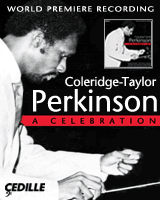
|
|||||||||||||||||||||
 |
|
It is a traditional belief that sport fosters democracy and equality and the notion is mythical as it concerns race. According to sports pundits like ESPN’s Bert Sugar, the accomplishments of black athletes like Joe Louis did more to advance blacks in this country than all legislation, organizations and movements combined. Their victories, according to such experts, convinced whites that blacks were not inferior, and earned their race a newfound human respect that was seemingly unfathomable before Louis set foot in the ring or Jackie Robinson swung a bat. This same ideal is at work in Glory Road, the story of an interracial basketball team from a once-segregated southern school that captured the 1966 NCAA championship. The event is particularly significant because it occurs at the opening of the Sixties, and although the activism of the period lends meaning to the film, much of the student and minority subtext of the era is absent from Glory Road. With the exception of references to Malcolm X and a distant civil rights movement occurring in the Deep South, the story of these black student-athletes appears remote from the protests of the period. Glory Road would have us believe that while their student and working class contemporaries across the globe organized in an effort to fundamentally alter society, all the black kids at Texas Western wanted to do was play basketball. And by doing so, they accomplished much of what their more militant black and student contemporaries were attempting by marching in the streets and taking over classrooms.
Such an unlikely outcome seems plausible because of the film’s liberal projection of racial discrimination, which, of course, is the compelling issue of “the Sixties” and the movie. Glory Road suggests that with the exception of minor arguments with white teammates and the assault of a player by several uncouth whites during a southern road trip, Texas Western’s black players did not encounter much tangible racism. The film also subtly suggests that they are taught to overcome the racial stereotypes that they do encounter by conforming to the standards of organized basketball. Subsequently, their liberal white coach, Don Haskins chooses to use only black players and start five for the first time in the history of the NCAA championship game to illustrate that blacks are capable of the same accomplishments of whites. Through Haskins’ foresight and altruism, the Miners’ seven black players, much like Jackie Robinson’s integration of white institutional baseball in 1947, make a significant contribution to society by challenging the prevailing racist perception that blacks are competitively inferior to whites. The truth of the Texas Western championship is far
different. Glory Road is “based on a true story,” which
in this case means that the events surrounding the Texas Western
team have been condensed for an 1 hour and 58 minute feature film,
but the essence of the story remains factual. Thus,
However, several of the black players remember their return differently. Two years after the game, cerebral and feisty point guard Willie Worsley told a reporter that after the airport reception, a parade and a banquet, “that was about the end of it. We were never campus heroes. We were never invited to mixers or anything like that.” Before and after that game, the predominately white university community, including the coaches and administration, made it clear to the black players that they were there to play basketball and garner the little known school athletic prestige and revenue, but to do little else. Worsley stated that he and the other black players continued to be treated like “animals” by their white coaches, teammates and others at the school. “You play basketball and that’s it. When the game's over, they want you to come back to the dormitory and stay out of sight.” The racial discrimination that black student-athletes experienced at Texas Western, however, is absent from Glory Road. In 1968, Worsley and teammates David Latin and Willie Cager were among a number of black student-athletes at the school who revealed to Sports Illustrated a litany of racial prejudices condoned by the athletic department and university. For instance, blacks continued to be assigned segregated housing on campus and during road trips, could not rent housing in several well-to-do white neighborhoods surrounding the campus and were denied the routine and extralegal financial and summer job assistance doled out to their white teammates. Additionally, they were harassed by white students and coaches, including Haskins, if they dated white co-eds. They also complained that several members of the administration, including athletic director George McCartney, openly referred to them as “niggers” and made them the butt of racial jokes. In the film, McCartney is portrayed as a liberal ally of the basketball program. As telling, none of the seven black members of the championship team graduated with their class. Several of them indicated that the athletic department did not believe that blacks possessed the sufficient intellectual aptitude to pass core college classes, so blacks were enrolled in “Mickey Mouse” elective courses that kept them eligible to participate in sports, but did not earn them credits toward graduation. As a result, more than a decade after the championship, all seven had completed their athletic eligibility, but none had earned a college degree. After speaking with several coaches, administrators and athletes at the school, reporter Jack Olsen concluded that Texas Western had “done little more than hire out Hessians for four years, or long enough to bring a [national] championship” to the school.
The discrimination that Worsley and the others experienced at Texas Western was as palpable as the economic and social racism that they experienced in their Jim Crow and inner-city communities and by 1967, it had worn on the black student-athletes. That fall semester, black football players at the school staged a sit-in of the athletic dorms and pledged to boycott practice and games until blacks received the same financial assistance as whites and the administration and coaches agreed to end housing segregation. The protest ended after the athletic department made several promises, but black students claimed they were never kept. Racial tensions continued to simmer over the following months and then exploded the next April with the assassination of Martin Luther King, Jr. Several black members of the track team say that a white track coach disregarded their need to grieve the loss of a hero and required them to compete in a meet the following weekend. The next week, they refused to travel to a meet at Brigham Young University in Utah because of the school’s afflation with the Mormon Church, which taught that blacks were an inferior race. Subsequently, several of the black athletes quit or were dismissed from the track team and lost their scholarships. The following semester, several black members of the football team joined them in protest. The turmoil at Texas Western was not unusual. Beginning in 1967, black student-athletes at more than a 100 predominately white colleges and several high schools protested the racial discrimination they experienced at the hands of white teammates, coaches, athletic directors and campus communities. The two black champion sprinters, Tommie Smith and John Carlos, who protested at the 1968 Mexico Olympics, had participated in the black students’ movement at San Jose State (CA) College early that school year. Beginning in the 1950s, schools with inconspicuous sports traditions like Texas Western and San Jose began recruiting blacks to bolster their athletic teams because they could not lure the same quality of white athletes as flagship universities such as Southern Cal and Texas. While blacks have made up roughly more than half of the nation’s best football and basketball rosters for more than two decades now, in the 1950s and 1960s, they led second-tier schools like San Francisco, Loyola of Chicago and Michigan State to NCAA championships and athletic fame and fortune. In the 1970s and 1980s, their recruitment instantly made once-segregated regional universities like Louisville and Georgetown into basketball powers. In the 1970s, Florida State and Miami took similar routes to national football prominence. Along the way, these universities reaped the increased spectator and media revenue that had traditionally gone to athletic giants like Notre Dame and the Big Ten.
Texas Western was one of the first formerly white colleges to capitalize on that trend and because of the 1966 NCAA championship, the school, like college athletics in general, acquired the misnomer of avant-garde in racial advancement. Conversely, the anti-war, student and Black Power movements of the period reminded liberal America that racism and class discrimination did not end when minorities and the have nots integrated exclusive institutions. Justice would be rendered when those institutions accorded minorities and the masses the same rights and dignities as that of white elites. Clearly, in all that the Miners’ victory changed in 1966, the protest of Worsely and other black student-athletes across the country illustrated that the championship did not immediately diminish the institutional racism that blacks endured at Texas Western and other predominately white schools. Stokely Carmichael, a student activist in the Sixties, warned that mainstream history often liberalizes past racial and class struggles, thus altering how their rational and purpose are understood. He noted that discrimination often occurs in two phrases; “first, it occurs in fact and deed, then – and this is equally sinister – in the official recordings of these facts.” Unfortunately, Glory Road participates in such a process by suggesting that Texas Western’s 1966 championship was a momentous achievement in the nation’s ongoing process to overcome racism, but omitting the harshest forms of racial discrimination that the black players continued to experience. Glory Road also never explores the notion that while the 1966 NCAA championship game enlightened some whites to the capabilities of blacks, it confirmed the suspicion of others that blacks innately possessed a “primitive” athletic ability that was evidence of the biological differences between the races. Therefore, the factual essence of story, the fact that these black men achieved their momentous goal in spite of the demeaning racism that enveloped their being at Texas Western, is missing from Glory Road. Dexter L. Blackman is Ph D candidate in history at Georgia State University. Many of the facts used to write this article can be found in Jack Olsen’s 1969 New York Times best-seller, The Black Athlete: A Shameful Story; The Myth of Integration in American Sport. Copyright 2006 by Dexter L. Blackman |
|
| Home | |
Your comments are always welcome. Visit the Contact Us page to send e-Mail or Feedback or Click here to send e-Mail to [email protected] e-Mail re-print notice
If you send us an e-Mail message we may publish all or part of it, unless you tell us it is not for publication. You may also request that we withhold your name. Thank you very much for your readership. |
|
| February 16, 2006 Issue 171 |
||||||||||||||
|
||||||||||||||
|
||||||||||||||
| Printer Friendly Version in Plain Text or PDF format. Download free Adobe Reader. | ||||||||||||||
 |
||||||||||||||
 |
||||||||||||||
 |
||||||||||||||
| |
||||||||||||||
| |
||||||||||||||
































